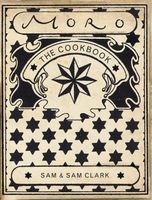Advertisement
Azafrán
Saffron
Appears in
By Samantha Clark and Samuel Clark
Published 2001

‘Azafrán’ is a Spanish word of Arabic origin, meaning ‘yellow’. The area around La Mancha in central Spain produces some of the best-quality saffron in the world. Saffron is the stigma of a variety of lilac crocus called ‘Crocus sativus’, which comes into flower during the early part of October. The crocus is picked at first light before the flowers open to minimise the risk of damage from the elements. The stigmas are then sorted by hand before being dried and boxed. It takes about 200 crocuses to fill a 1g box, so saffron is a precious commodity. Considering all this, far from being expensive, it actually seems rather cheap. If we had to rely on a florist for our supply of crocuses, it would be a different story. Saffron is highly prized in cooking, particularly in rices and fish stews, for it has a distinctive, earthy flavour that is at the heart of Spanish cooking especially. To use saffron, we warm it over the gentlest of heats until just brittle (saffron varies in dryness), then crumble it roughly, pour boiling water on it to cover, and then leave it to infuse for anything from 10 minutes. Spain produces around 70 per cent of the world’s saffron. The rest is from Kashmir and Iran.



